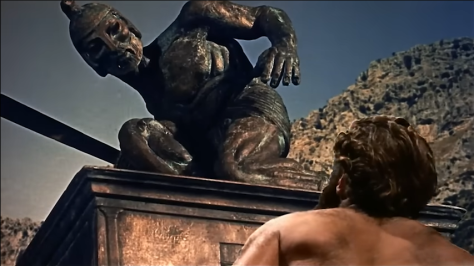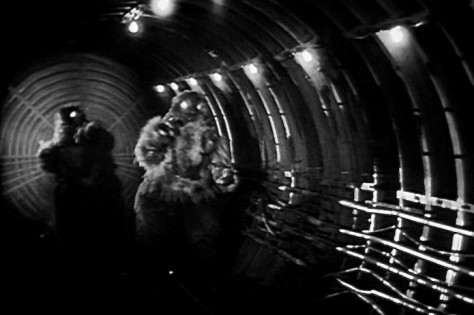
Ray Harryhausen’s stop motion animation sought to continue and improve upon the naturalism seen in the work of his mentor Willis O’Brien, transforming fantastical ideas into living, breathing things, and demonstrating the new dimension film can bring to the collective imagination. There did come a point, though, where it no longer seemed like a creatively fulfilling challenge to animate colossal, city-wrecking creatures in movies that were, in truth, slight variations of each other (he had worked on at least four of them by 1957, if you include Mighty Joe Young)—and to really move into a new phase, Harryhausen and his producer partner Charles H. Schneer pivoted to fantasy films starting with The Seventh Voyage of Sinbad in 1958, leaving behind the concerns of the age for a realm of pure story. No longer would Harryhausen be stuck contrasting his giant beasts with the concrete canyons of the modern world, but working in a wider variety of classical settings—and more than that, he was given the opportunity to apply his animation talent not just to the lumbering mutant animals and extraterrestrials that populated the fifties creature feature boom, but to the magical, implausible monsters found across legends and mythologies. Here, finally, was a new and rewarding challenge: bringing naturalism to the unnatural.
It was likely inevitable that Harryhausen would work on a story from Greek mythology, a setting in dire need of some technical craft after years of cheap Italian sword-and-sandal films. For fans of monsters of all shapes and sizes, those tales are among the inescapable urtexts, a boundless fount of unearthly creatures diverse in appearance and abilities, inexorably attached to the stories of great heroes that have influenced adventure stories across history. If any monsters could be said to be eternally iconic, the ones from these myth are at the top of the list, and to bring them to life on film would be a defining achievement for any monster maker. Jason and the Argonauts, the first (but not last) of Harryhausen’s Greek myth movies, ranks highly in his filmography both for its sense of wonder and its authenticity, conjuring the world as described in those stories on screen and populating it with larger-than-life figures.


